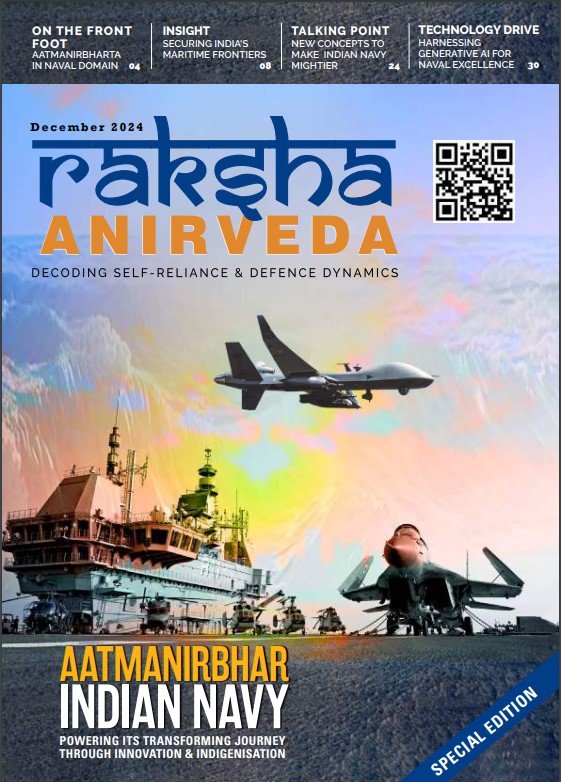Indian defence got a massive boost in keeping with the government’s Aatmanirbhar Bharat initiative as Adani Defence partners with US firm Sparton to build India’s first indigenised sonobuoy systems for the Indian Navy. This would give the much needed defence equipment a huge push up in the present existing situation when the tension along the India-Pakistan border continues in the wake of the April 22 Pahalgam attack and the tough Operation Sindoor reply given by the Indian government.
The agreement between US firm Spartan DeLeon Springs and Adani Enterprises aims to localise the assembly and eventual manufacturing of advanced ASW solutions in India, addressing a longstanding reliance on foreign imports. A tactical sonar system for transmitting submarine activity, the sonobuoy is a core technology for anti-submarine warfare. Sparton manufactures both active (emitting sound energy into the water and waiting for a return transmission) and passive (purely listening for sound wave transmissions) sonobuoys.
With over 6 million sonobuoys deployed Sparton Sonobuoys continue to be the most effective anti-submarine warfare sensor capability. Sonobuoys can be outfitted with an array of sensing technologies to adapt to the mission’s requirements. Sonobuoys are made American-tough. Each Sparton Sonobuoy can be deployed in the air or directly in the sea. No matter how you get there, Sonobuoys get you what you need. Equipped with advanced technology, Sparton Sonobuoy’s reach goes deeper into the ocean than ever before.
In a significant move to strengthen India’s undersea warfare capabilities, Adani Defence & Aerospace’s strategic partnership with Sparton DeLeon Springs LLC, a US-based subsidiary of Elbit Systems and a leading provider of anti-submarine warfare (ASW) systems marks a first for India’s private sector, enabling the indigenous production of sonobuoys, critical electronic systems used to detect and track submarines.
The agreement aims to localise the assembly and eventual manufacturing of advanced ASW solutions in India, addressing a longstanding reliance on foreign imports. This step aligns with the government’s ‘Aatmanirbhar Bharat’ and ‘Make in India’ initiatives by building sovereign capability in a sensitive and strategic domain.
Jeet Adani, Vice President of Adani Enterprises, said the development comes at a crucial time for India’s maritime preparedness. “In an increasingly volatile maritime environment, strengthening India’s undersea warfare capabilities is not merely a strategic priority but an imperative for safeguarding sovereignty and national interests. The Indian Navy requires integrated, mission-ready ISR and anti-submarine warfare capabilities, including critical systems like sonobuoys, that are indigenously developed, swiftly deployable, and globally competitive, he added. “This initiative reflects our Group’s vision of empowering India’s armed forces with world-class capabilities that are designed, developed, and delivered in India, for India and the world.”
Sonobuoys are key platforms in underwater surveillance, used by naval forces to track enemy submarines and protect carrier strike groups. The system also contributes to broader intelligence, surveillance, and reconnaissance (ISR) efforts.
Ashish Rajvanshi, CEO of Adani Defence & Aerospace, said: “For decades, India has been dependent on imports for such critical technology. This partnership to bring world-class sonobuoy technology and integrating it with India’s defence ecosystem is a step towards building self-reliant capabilities in this critical domain.”
Donnelly Bohan, President and CEO of Sparton DeLeon Springs, said this partnership will enable both companies to localise assemblage, create high-technology skill sets, and deliver reliable ASW solutions tailored to the Indian Navy’s needs.
With increasing competition among nations for possessing the latest weaponry, the period has seen the return of great power competition, which some call a new Cold War and so beginning a bull market for the antisubmarine warfare sonobuoy business.
Sonobuoys — expendable floating sensors fitted with acoustic receivers, transmitters or both — are the primary antisubmarine warfare sensor of US and NATO maritime patrol aircraft such as the P-8, P-3, and MH-60R. They are used to track submarines and provide locating positions for attack.
Eric Webster, Ultra’s president of Sonobuoy Systems, told Seapower at Sea-Air Space 2022 that his company — allied in a joint venture, ERAPSCO, with Elbit’s Sparton sector — is producing 200,000 sonobuoys per year, a level approaching the number built annually during the mid-1980s in the midst of the Cold War, when US Navy and allied ASW expended thousands of sonobuoys to track Soviet submarines.
Last year, Ultra “built more sonobuoys than ever before,” Webster said, noting the Navy may order more “above max quantity” of the current contract. He said the joint venture has built more than seven million sonobuoys for US and international partners. The increased orders reflect efforts by the US and allied and partner navies and air forces to increase their capabilities and capacity to counter the Russian and Chinese submarine threats.
– The writer is a senior journalist and media consultant. The views expressed are of the writer and do not necessarily reflect the views of Raksha Anirveda.






